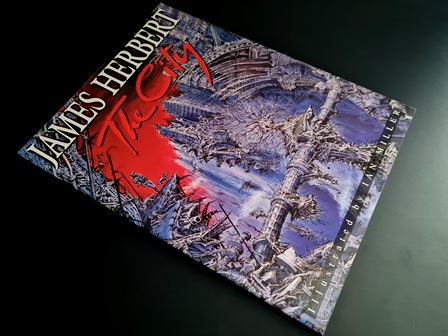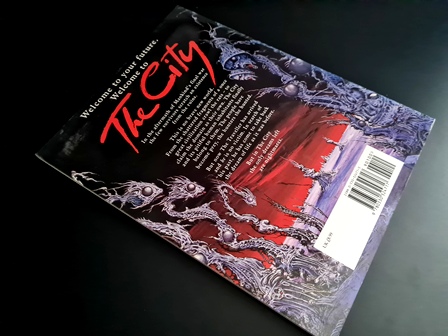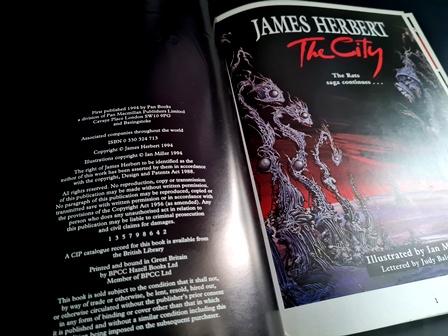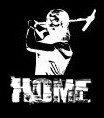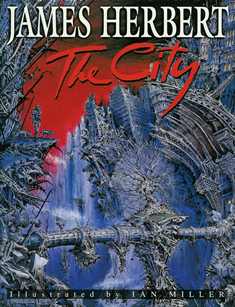
First published back in March of 1994, the graphic novel ‘The City’ forms the fourth and final instalment into James Herbert’s cult-classic splatterpunk ‘Rats’ series. Following on from Herbert’s last addition, ‘Domain’ (1984), the graphic novel is pushed even further forward into the post-apocalyptic aftermath, where mankind is no longer the dominant ruler of the world.
DLS Synopsis:
The world is a ragged, despicably corrupted place where vermin are the new rulers. Mankind has been cut down, cast into the vast gutter that is now the world. Everything has decayed to filth. Nothing is as it was. The rats are the new kings.
And on the edge of the city, the lone sentinel watches from upon his perch, as the traveller walks on. On towards the city. A great city that is now ruled by the rats. Where what remains of mankind has been twisted…mutated…corrupted…and left to scavenge for an existence in the rotting ruins of its streets.
The traveller has returned to take back a part of his old life. A life before the final war ripped apart the world and left behind this decaying corpse in its aftermath. He is not alone in his travels. His two dogs, half-animal-half-machine, accompany him through this new hell on earth.
Around them pitiful men trudge through the rubble covered streets. Rats always watching over them. Directing them. Enslaving them. The vermin the cruel rulers of the city. But the traveller must move on. He must get past the mutations. Past the scavengers. And past the rats. To the one place on earth that holds a memory of his past.
And when he has done what needs to be done, he will enact his unforgiving revenge...
DLS Review:
Herbert’s graphic novel ‘The City’ is a strange nightmarish vision of a horrific hell-like post-apocalyptic world. Artist Ian Miller’s detailed illustrations throughout the graphic novel show a haunting picture of a ravaged world, distorted and mutated into something terrifying and twisted.
Miller’s artwork is strangely stylised, with an incredible wealth of detail in places and a more sketchy approach taken in others. However, this works particularly well in the visual representation of the progressing storyline. Indeed, the intrinsic pen and ink work used draws the reader’s eyes into a savage and haunting new cityscape, with the imagery in each individual frame holding the reader’s attention with the detail and magnificent elaboration of the mutated post-apocalyptic backdrop.
Very few words are used in the entire storyline. The short, sharp statements of text that accompany a good portion of the storyboard are as sporadic and simplistic as they are darkly poetic and mood setting. Furthermore, barely any dialogue is found within the entire tale. Just brief bursts of speech from the odd mutated survivor and then finally our near-mute traveller himself.
The overall feel of this weirdly surreal graphic novel is almost as if it was a gritty Western thrust into a bizarre hellish post-apocalyptic world. The simplistic storyline just plods ever onwards, with more attention given to the utter grittiness and twisted imagery than anything else. It must be said that this is a dark and guttural story. There’s not much in it to add any degree of light or warming relief from the bleak and depressive backdrop. And it maintains this cloak of oppressive misery until the very last twisted page.
The graphic novel runs for a total of 64 pages.

© DLS Reviews
Other ‘Rats’ instalments:
